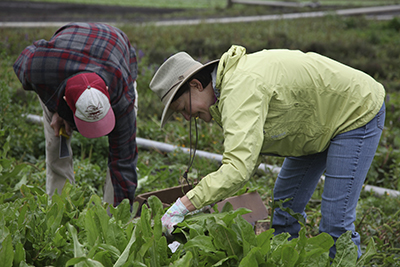Have you ever wondered what to do with the extra fruit picked from your backyard orchard or the harvest of veggies that you just don’t know what to do with? Or what happens to the left over food at the market or that you see along the edges of a farm that has already been harvested?
If you do, then you need to understand the concept of gleaning and how important the kind act of gathering excess food can benefit those in need.
Gleaning was once mostly known as the simple act of gathering grain or other material that is left after the main crop is harvested. In ancient Biblical times the law of the land was to leave the corners of fields overlooked during harvest so that the poor, windows, orphaned and strangers cold eat. During 19th Century England the villagers were allowed to glean from the lordship’s land and the church bells would ring out to indicate the appropriate times each morning and evening.
Today, gleaning can include gathering leftovers from farms, gardens, farmers, markets, or even a restaurant to help those in need. Modern day gleaning is often organized by humanitarian groups can be considered the collection of food even from a supermarket’s extras at the end of the day.
It is important to note that gleaning from a farm requires the cooperation of field owners so that growers can control the quality of food handling on their property. Thanks to The Good Samaritan Act of 1996, farmers are now protected from liability claims of gleaners who might be injured in the fields and protects food donors from liability claims of recipients of donated food.
Gleaning plays a critical role in getting food to those in need. The USDA reports that over 100 billion pounds of food are thrown away each year, which represents about 20 percent of our national food supply. Simultaneously, more and more children are living in homes that are experiencing food insecurity and go hungry as they live in low income areas where healthy food is more scarce.
If you’re interested in gleaning at a farm in Marin, then the best method work through Marin Organic’s organized farm gleanings or contact them so they can help you get food gleaned from your own yard to the SF-Marin Food Bank and other organizations in need.
“Gleaning helps Marin’s organic food reach everyone who needs and ensures that crops don’t go to waste and that access to healthy food is a right not a privilege,” comments Jeffrey Westman, executive director of Marin Organic. “This is especially important with today’s rapid rise of health issues associated with poor diet and cutbacks on the Supplemental Nutrition Assistance Program (SNAP).”
Marin Organic’s gleaning brings the nutritious value of over 10,000 lbs of organic produce each year to food banks, schools, and low-income families in need. Through a partnership with Cropmobster and direct connections to farmers, Marin Organic invites a wide range of volunteers to farms to pick and pack produce each week of the growing season. Parents, kids, corporations, community groups, food service workers and many other dedicated individuals have come together to ensure that Marin’s organic produce is made available to everyone. Food is then delivered to the SF-Marin Food Bank and distributed to those in need either directly to non-profits or to families in need through a farmer’s market style pantry at schools.
An updated calendar of gleaning events is available online at marinorganic.org.



